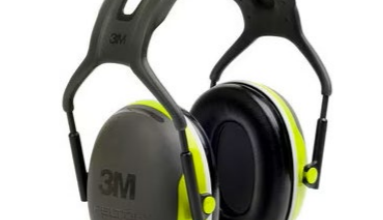Before Stroke Thrombectomy, Keep the Bed Flat, Trial Says

— Tilting the head of the bed up during early window in large vessel occlusion hurts outcomes
by
Crystal Phend, Contributing Editor, MedPage Today
February 7, 2024
PHOENIX — For large vessel occlusion (LVO) acute ischemic stroke patients planned for mechanical thrombectomy, bed positioning made a big difference in clinical worsening, the ZODIAC trial showed.
Keeping the head of the bed flat at a zero-degree angle after the CT scan while awaiting the cath lab led to 50-fold fewer cases of early neurologic worsening compared with the usual 30-degree angle. The rate of NIH Stroke Scale (NIHSS) score increase of at least 2 points during that period was just 2.22% with the zero-degree head position compared with 55.32% in the heads-up group (P<0.001), reported Anne Alexandrov, PhD, ANVP-BC, of the University of Tennessee Health Science Center in Memphis.
The number needed to harm with the 30-degree tilt was just 1.88, Alexandrov declared to enthusiastic applause at the late-breaking session of the American Stroke Association’s International Stroke Conference.
Ninety-day mortality was higher in the 30-degree positioning group as well (21.74% vs 4.44%, P=0.03).
“We have identified a safe position to place patients in that are candidates for thrombectomy,” she said. “This is certainly not a treatment for stroke — these patients need to go to the lab and be treated. But, we’d argue that use of zero-degree positioning may be one of the most important first steps in managing a large vessel occlusion patient. When you get that CTA [CT angiography] confirmation, put the head of [the] bed down.”
The implications are even more critical for patients who arrive at a hospital without capacity for thrombectomy and must be transferred, she suggested.
Positional cerebral ischemia has long been noted, with Alexandrov’s group having previously shown a 20% increase in cerebral blood flow in hyperacute LVO with flat positioning.
“It’s a very exciting confirmation of what the clinicians have long said, that position matters,” commented Jeffrey Saver, MD, of the University of California Los Angeles.
He noted that failure of zero-degree positioning in the larger HeadPoST trial from 2017 could have been due to enrollment of an unselected ischemic stroke population. “And you’d only expect patients with large occlusions, collateral dependent, to show an effect,” said Saver, who was not involved in ZODIAC, which he said “very smartly looked at the right patients and confirmed clinical intuition.”
The trial included 92 previously independent-living adults with LVO strokes planned for mechanical thrombectomy treatment at 12 participating hospitals from 2018-2023.
The inclusion criteria were typical of a patient being selected for thrombectomy during the study period, Alexandrov said. Exclusion criteria included evolving malignant infarction that would make randomization to zero-degree positioning unsafe or hard to tolerate.
All patients were scored with the NIHSS while on the CT scanning bed at zero degrees, then randomized to an immediate change to 30-degree bed positioning or to stay flat. Investigators stayed with the patient the entire time to ensure there was no alteration in the position from assignment.
Along with repeat NIHSS scoring every 10 minutes, a final NIHSS score was completed by a protocol naive-practitioner immediately before the patient was moved to the cath lab table for thrombectomy.
Enrollment stopped early due to efficacy. Although the COVID-19 pandemic presented a challenge, only one patient was lost to follow-up, Alexandrov noted.
The secondary endpoint of NIHSS deterioration of at least 4 points had similar results, with a 40.3 percentage point advantage to laying flat (2.22% vs 42.55%, P≤0.001) and a number needed to harm of 2.48.
Among the safety endpoints, hospital-acquired pneumonia or other pulmonary deterioration — one of the key rationales for keeping the head of the bed elevated in usual hospital practice — did not occur in either group, though the trial was underpowered for clinical events.
“In the short time window between arrival and cath lab, the risk of aspiration is less than over several days,” Saver noted, “so the standard nursing position for several days of care is not necessarily the one we want to use in the acute period.”
The next step might be to study head positioning in the pre-hospital arena, Saver suggested. “It is something that could certainly be easily applied in the ambulance … In the ambulance, you’re going to have some patients who have hemorrhage, who are going to be progressing, who might be more at risk for aspiration. So it’s an open question, but it could well also be beneficial there.”
Disclosures
Alexandrov and coauthors disclosed support by the National Institute of Nursing Research.
Saver has reported consulting and/or advising to Medtronic, Stryker, Cerenovus, and Rapid Medical. His institution also has patent rights in mechanical thrombectomy devices for stroke.
Primary Source
International Stroke Conference
Source Reference: Alexandrov A “Zero degree head positioning in acute large vessel ischemic stroke” ISC 2024; Abstract LB 1.
![author['full_name']](https://clf1.medpagetoday.com/media/images/author/crystalPhend_188.jpg)

